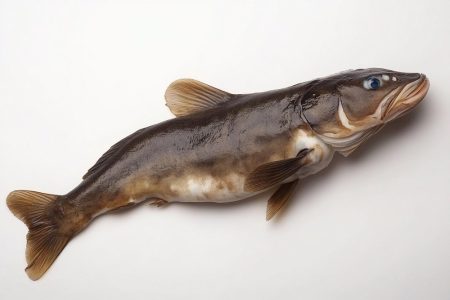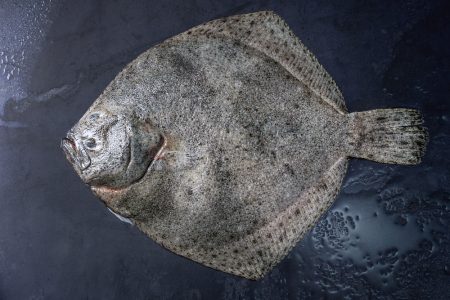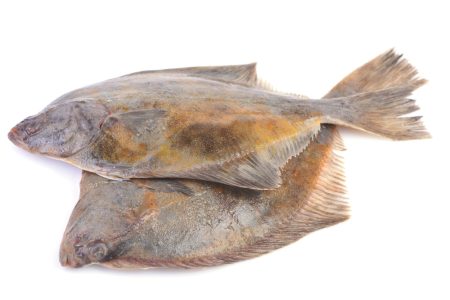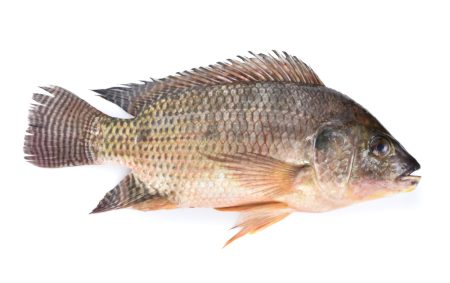Introduction
Incorporating fish into a balanced diet is a smart choice for overall wellness, particularly as we age and seek ways to maintain vitality, support cognitive function, and strengthen our bones and muscles. Among the healthiest options for fish are lean, low-fat varieties known as white fish. These types of white fish offer a rich array of nutrients, making them valuable additions to any meal plan focused on longevity and health.
White fish are unique in their low-fat profile, delivering high-quality protein without the higher calorie content often found in other protein sources. This makes them ideal for those looking to manage their weight while still enjoying satisfying and nutritious meals. Additionally, white fish are typically rich in vitamins and minerals that promote healthy aging. Essential nutrients like B vitamins, selenium, potassium, and phosphorus work together to support everything from heart health to bone strength and brain function. Some types of white fish also contain beneficial omega-3 fatty acids, which are linked to reduced inflammation, improved heart health, and enhanced cognitive performance.
This post explores the top five types of white fish – cod, haddock, halibut, flounder, and tilapia – each with distinct health benefits and culinary versatility. Whether you’re looking to boost your nutrient intake, improve heart health, or simply enjoy flavorful meals with minimal calories, these white fish varieties offer a powerful nutritional boost. Read on to discover their unique health benefits and simple ways to add them to your diet.
Affiliate Disclaimer
Our website may include links to affiliate sites. If you click on an affiliate link and make a purchase, we may earn a small commission or receive other compensation at no extra cost to you. Please note that many of the links on our site are affiliate links. Our use of these links does not impact the products, services, or websites we recommend to you. This disclaimer covers all forms of communication with you, including our website, email, phone, social media, products, and other platforms.
Amazon Affiliate Disclaimer
We participate in the Amazon Services LLC Associates Program, an affiliate marketing program that allows us to earn fees by linking to Amazon.com and its affiliated sites. If you click on an Amazon affiliate link on our site and make a purchase, we may receive a small commission at no additional cost to you.
Section 1: What Are White Fish?
White fish are a diverse group of fish known for their mild flavor, lean protein, and nutrient density, making them excellent choices for a healthy diet at any age. Unlike oily fish, which tend to have higher fat content, white fish are lower in fat and calories, yet they still offer a powerful protein boost along with essential vitamins and minerals. Popular types of white fish include cod, haddock, flounder, tilapia, and halibut, each bringing unique flavors and benefits to the table. Understanding the nutritional value and culinary versatility of different types of white fish can help you incorporate them more effectively into a balanced diet.
Understanding the Nutritional Profile of White Fish
One of the primary advantages of white fish is their lean profile. Most types of white fish contain significantly less fat than their oily counterparts, making them lower in calories while still being rich in protein. This high-quality protein is essential for muscle maintenance and repair, especially as we age and muscle loss becomes more common. White fish are also packed with key nutrients like B vitamins, which aid in energy production and support brain health, and minerals such as selenium, phosphorus, and potassium. Together, these nutrients promote various health functions, from bone strength to cardiovascular health.
White fish generally contain fewer omega-3 fatty acids than oily fish like salmon or mackerel. However, some types of white fish, like halibut, still offer a moderate amount of omega-3s, which are well-known for their anti-inflammatory properties and support for heart and brain health. For those seeking to manage their weight while maintaining good health, these types of white fish are excellent choices, as they help satisfy hunger without excessive caloric intake.
Comparing White Fish to Other Fish Types
It’s helpful to differentiate types of white fish from other fish categories, particularly oily fish, to better understand their unique health contributions. Oily fish, such as salmon, sardines, and tuna, have a higher fat content, which makes them rich in omega-3 fatty acids. While this fat content is beneficial, it also increases the calorie count, making white fish a lower-calorie alternative. Additionally, the mild flavor of white fish allows for greater versatility in recipes, from simple baked dishes to more complex preparations.
Each type of white fish offers a delicate taste that easily complements other flavors, making it adaptable to various cuisines. This adaptability, combined with their health benefits, makes types of white fish ideal for individuals looking to increase their fish intake without the strong, sometimes overwhelming, flavors of oily fish.
Popular Types of White Fish and Their Role in a Balanced Diet
Types of white fish such as cod, haddock, and flounder are widely available, making them accessible and affordable protein sources. These fish are often recommended by dietitians for those who want to balance a nutrient-rich diet with minimal saturated fats. They are also easy to digest, which can be especially beneficial for older adults or those with sensitive digestive systems.
Incorporating different types of white fish into meals provides not only variety but also a comprehensive range of nutrients that can support healthy aging. From boosting heart health to enhancing bone density and promoting cognitive function, white fish is an important component of a diet focused on long-term health and vitality. By understanding what each type of white fish offers, you can make informed choices that align with your health goals, ensuring you enjoy nutritious, flavorful meals that promote well-being at any stage of life.
Section 2: Health Benefits of Eating White Fish
White fish offer a unique combination of low-fat, high-protein nutrition that supports overall wellness, especially in older adults. Many types of white fish deliver essential vitamins, minerals, and other nutrients that promote heart health, bone strength, muscle maintenance, and even cognitive function. With their low calorie count and satisfying protein, white fish are especially beneficial for weight management and healthy aging. In this section, we’ll look at some of the core health benefits of white fish and explore why they are a wise choice for those looking to boost their nutrition with minimal fat and calories.
1. Lean Protein for Muscle Maintenance and Repair
One of the key benefits of consuming types of white fish is their lean protein content. Protein is a fundamental nutrient that aids in building and repairing muscles, tissues, and cells. For aging adults, adequate protein intake is crucial for preventing muscle loss, known as sarcopenia, which can affect strength and mobility over time. Whitefish provides high-quality protein without the high-fat levels found in red meat, making them an ideal choice for muscle maintenance and overall strength.
Because white fish are rich in amino acids—the building blocks of protein—they help support the body’s natural repair processes. Including types of white fish such as cod or haddock in your diet can contribute significantly to muscle health, which is essential for maintaining mobility and independence as we age.
2. Low-Calorie and Low-Fat Nutritional Profile for Weight Management
For individuals who want to manage their weight while maintaining good nutrition, white fish are a perfect fit. Types of white fish tend to be low in both calories and fat, making them a satisfying choice that aligns well with calorie-conscious meal plans. Unlike fattier proteins, white fish deliver ample protein without excessive calories, which can aid in feeling fuller for longer without the added fat.
Cod and flounder, for example, are excellent low-calorie options that allow you to enjoy a nutrient-dense meal without extra caloric intake. They’re also extremely versatile, fitting into a range of cooking styles without compromising their nutrient density. By choosing white fish, you can enjoy meals that support your health goals and leave you feeling satisfied without the need for large portions.
3. Essential Vitamins and Minerals for Healthy Aging
Types of white fish are packed with vitamins and minerals essential for various bodily functions, especially beneficial for those focused on healthy aging. Some of the most important nutrients found in white fish include:
- B Vitamins: White fish are excellent sources of B vitamins, particularly B6 and B12, which play crucial roles in energy production, nervous system function, and red blood cell formation. Vitamin B12, in particular, supports cognitive health, which is important for older adults.
- Selenium: Found in types of white fish like haddock and halibut, selenium is a powerful antioxidant that protects cells from damage. Selenium also supports immune health and thyroid function, both of which are essential for maintaining vitality as we age.
- Phosphorus: Phosphorus is vital for bone health, and white fish, such as halibut and cod, contain ample phosphorus, which can support strong bones and reduce the risk of fractures, particularly in older adults.
- Potassium: A mineral that helps regulate blood pressure, potassium in white fish can support cardiovascular health by counteracting sodium’s effects in the body, which helps maintain healthy blood pressure levels.
These nutrients, combined with the high protein and low-fat content of white fish, contribute to a well-rounded diet that meets essential nutrient needs without excess calories or fats.
4. Omega-3 Fatty Acids for Heart and Brain Health
While types of white fish generally contain lower amounts of omega-3 fatty acids than oily fish, certain types, such as halibut, still provide beneficial levels of these heart-healthy fats. Omega-3s are essential fats that the body cannot produce on its own, so they must be obtained through diet. Omega-3 fatty acids, particularly EPA and DHA, are associated with reduced inflammation, improved heart health, and enhanced cognitive function.
The moderate omega-3 content in some white fish varieties helps support cardiovascular health by reducing triglyceride levels, lowering blood pressure, and protecting against plaque buildup in arteries. Additionally, omega-3s are known to benefit brain health, potentially reducing the risk of age-related cognitive decline. Including omega-3-rich white fish in your diet, even in moderate amounts, can support heart and brain health effectively.
5. Versatile and Easy to Digest for Sensitive Diets
One of the often-overlooked benefits of white fish is its mild, easily digestible nature. Types of white fish, such as tilapia and flounder, are gentle on the digestive system, making them ideal for individuals with sensitive stomachs or digestive issues. Older adults, in particular, may find white fish easier to digest than richer meats, allowing them to enjoy a protein-rich diet without gastrointestinal discomfort.
The mild flavor of white fish also makes it an excellent foundation for various dishes, as it can absorb different seasonings and cooking styles with ease. This versatility encourages incorporating white fish into multiple meals, ensuring a balanced diet with diverse flavors. For those who may not enjoy strong-flavored fish, white fish offer a more palatable option without sacrificing health benefits.
6. Comprehensive Support for Heart, Bone, and Brain Health
Incorporating types of white fish into your diet provides comprehensive support for essential health areas, such as heart, bone, and brain health. By including white fish regularly, individuals can enjoy the combined benefits of high-quality protein, essential nutrients, and moderate omega-3s in a single meal. Whether baked, grilled, or steamed, white fish offer a nutritious, flavorful, and versatile option that complements healthy aging.
With their many health benefits, types of white fish are ideal choices for those looking to optimize their diets for longevity and vitality. A diet rich in white fish can support daily energy, strengthen the immune system, and contribute to long-term health, making them a valuable addition to any nutrition-focused meal plan.
Section 3: Top 5 Types of White Fish and Their Specific Health Benefits
White fish are known for their high protein, low fat, and essential nutrient content, making them ideal for supporting a balanced diet, particularly as we age. Among the types of white fish available, certain varieties stand out for their unique health benefits and culinary versatility. In this section, we’ll explore the top five types of white fish—cod, haddock, halibut, flounder, and tilapia—and their individual nutritional contributions, along with tips on how to incorporate them into your diet.
1. Cod: A Lean, Mild Fish for Bone and Brain Health
Cod is one of the most popular types of white fish, known for its mild flavor and adaptability in cooking. Often used in dishes ranging from fish tacos to chowders, cod’s light taste and flaky texture make it suitable for a variety of preparations.

- Nutritional Highlights: Cod is rich in protein and low in fat, with a significant amount of vitamin B12 and B6. It also contains phosphorus, which is crucial for bone health, and niacin, which helps support skin health and energy production.
- Health Benefits: The high B12 content in cod supports cognitive health and nerve function, essential for older adults looking to maintain mental clarity and energy. Phosphorus is beneficial for bone strength, making cod a smart choice for bone health.
- Cooking Tips: Cod is versatile and works well in both simple and complex dishes. Try baking it with a light seasoning of herbs and lemon, or use it in a healthy fish stew for a nutrient-packed meal.
2. Haddock: A Slightly Sweet Fish for Antioxidant Support
Haddock is another mild and flavorful white fish that is slightly sweeter than cod, making it a popular choice for fish and chips or grilled dishes. Among the types of white fish, haddock is notable for its impressive selenium content, an antioxidant that can help protect the body from cellular damage.

- Nutritional Highlights: Haddock is high in selenium, vitamin B12, and phosphorus. Selenium is an essential mineral that acts as an antioxidant, helping to support immune health and protect cells from oxidative stress.
- Health Benefits: Selenium’s antioxidant properties support overall health by combating cellular damage, which is essential for healthy aging. Additionally, the combination of phosphorus and vitamin B12 in haddock promotes bone health and red blood cell formation, which aids energy levels and prevents anemia.
- Cooking Tips: Haddock’s mild sweetness pairs well with herbs and light sauces. It can be pan-fried with a small amount of oil or oven-baked with lemon and rosemary for a healthy, flavorful dish.
3. Halibut: A Firm Fish Rich in Omega-3s for Heart and Brain Health
Among types of white fish, halibut is one of the more substantial and firmer options, making it a great choice for grilling or baking. Halibut is also a source of omega-3 fatty acids, which are well-known for their heart and brain health benefits.

- Nutritional Highlights: Halibut is packed with omega-3 fatty acids, potassium, magnesium, and vitamin D. It is also a good source of high-quality protein, which supports muscle maintenance and repair.
- Health Benefits: The omega-3 content in halibut contributes to heart health by reducing inflammation, improving blood pressure, and lowering triglyceride levels. Vitamin D and potassium support bone health and cardiovascular function, while magnesium is essential for muscle and nerve health.
- Cooking Tips: Halibut’s firm texture makes it ideal for grilling, as it holds together well. It also works beautifully when baked with a garlic and herb crust. Try adding a side of steamed vegetables for a nutrient-dense meal that’s heart-healthy and delicious.
4. Flounder: A Low-Calorie Fish for Weight Management
Flounder is a delicate, mild-flavored white fish that is low in calories but rich in nutrients, making it a popular choice for those focused on weight management. Its soft texture makes it easy to incorporate into various light dishes.

- Nutritional Highlights: Flounder is low in calories and high in protein, with a good amount of niacin, magnesium, and potassium. Niacin, a B vitamin, supports energy production and skin health, while potassium is beneficial for blood pressure regulation.
- Health Benefits: With its low-calorie profile, flounder is ideal for those looking to enjoy a satisfying meal without added calories. Its high protein content aids in muscle maintenance and can help keep hunger at bay, supporting healthy weight management.
- Cooking Tips: Flounder’s mild flavor lends itself to light preparations. It can be lightly sautéed in olive oil with a sprinkle of herbs or baked with lemon and garlic. Pairing it with a fresh salad or steamed greens makes for a balanced, low-calorie meal.
5. Tilapia: An Affordable, High-Protein Fish for Immune and Nerve Health
Tilapia is one of the most affordable types of white fish, making it accessible and popular for a range of recipes. It has a mild taste and can easily take on the flavors of sauces or seasonings, making it adaptable to many dishes.

- Nutritional Highlights: Tilapia is rich in protein and contains high amounts of selenium and vitamin B12. While it’s lower in omega-3s than some other fish, tilapia provides important nutrients that support immune health and cellular protection.
- Health Benefits: Selenium in tilapia acts as an antioxidant that supports immune function, and B12 plays a critical role in nerve health and red blood cell production, which can help prevent anemia and maintain energy.
- Cooking Tips: Tilapia’s neutral flavor makes it versatile for various cuisines. It can be baked with Mediterranean seasonings, sautéed with a light garlic sauce, or added to stir-fries. Its affordability and mild flavor make it a practical choice for regular meals.
Incorporating White Fish into Your Diet
These top five types of white fish not only offer impressive health benefits but are also versatile in the kitchen. Here are some general tips on how to add more white fish to your meals:

- Buy Fresh or Frozen: White fish are available fresh or frozen, so choose what’s most convenient. Fresh fish should have a mild smell and clear eyes if whole. Frozen options can be equally nutritious and are often more affordable.
- Simple Cooking Methods: White fish work well with minimal seasoning and light cooking methods to preserve nutrients. Baking, grilling, steaming, and sautéing are all healthy options that keep the fish’s flavor and texture intact.
- Recipe Ideas: Experiment with dishes like fish tacos, fish stews, grilled fish with herbs, or baked fish with vegetables. Incorporating different types of white fish can provide variety while delivering essential nutrients.
Summary
By adding these types of white fish to your diet, you can enjoy a balanced, nutrient-rich approach to meals that supports everything from muscle maintenance and heart health to cognitive function and bone strength. Their low calorie and fat content make them ideal for healthy weight management, and their range of flavors means there’s a white fish option for every palate. Embracing the nutritional power of cod, haddock, halibut, flounder, and tilapia can contribute to a well-rounded diet, promoting overall wellness and longevity.
Section 4: How to Incorporate White Fish Into Your Diet
Adding white fish to your diet is a simple and effective way to boost protein, essential nutrients, and overall wellness, especially as we age. With their mild flavors and adaptable textures, different types of white fish can be prepared in numerous ways that suit various tastes and dietary needs. Here’s how to select, store, and cook white fish to maximize flavor and nutrition, along with a few easy recipe ideas to get started.
1. Buying and Storing White Fish for Freshness
Selecting high-quality white fish is key to enjoying their maximum nutritional benefits. Fresh fish should have a mild scent (not fishy), clear eyes (if whole), and firm flesh. Types of white fish like cod, haddock, and tilapia are commonly available fresh, frozen, or even pre-filleted, offering versatility based on personal preference and convenience.

- Choosing Fresh Fish: Look for fish that appear moist and shiny. The flesh should bounce back when pressed lightly, a sign of freshness. If buying pre-packaged fish, check that the package is tightly sealed and free from excess moisture.
- Frozen Options: Frozen fish is a convenient and cost-effective way to include types of white fish in your diet. Flash-frozen white fish retains much of its nutritional value, and frozen varieties like halibut and flounder can be stored for longer periods.
- Storage Tips: Fresh fish should be used within 1-2 days of purchase. Store it in the coldest part of your refrigerator, ideally on ice, to keep it fresh. Frozen fish can be kept in the freezer for up to six months—just make sure to thaw it in the fridge overnight for best results.
2. Simple Cooking Methods to Preserve Nutrients
Types of white fish are known for their delicate textures and mild flavors, which make them ideal for light, health-focused cooking methods. The goal is to preserve the nutrients without adding excessive fat or overpowering their natural flavors.
- Baking: Baking is a simple and healthy way to cook white fish. Season it with herbs like rosemary or thyme, add a squeeze of lemon, and bake in the oven for 10-12 minutes at 375°F until the fish flakes easily. This method works well for cod, haddock, and halibut.
- Grilling: White fish like halibut or tilapia, with firmer textures, can hold up well on the grill. Brush the fish lightly with olive oil, sprinkle with your favorite herbs, and grill for about 3-4 minutes per side. Grilling adds a slightly smoky flavor and works well in fish tacos or as a main dish.
- Steaming: Steaming is an excellent choice for delicate types of white fish, like flounder or sole. Steam with ginger and a dash of soy sauce for an Asian-inspired dish, or add a squeeze of lemon and herbs for a light, flavorful meal. Steaming helps retain the fish’s natural moisture and nutrients.
- Poaching: Poaching is a gentle cooking method that works well with mild fish like cod. Simmer the fish in a broth or lightly seasoned water for a tender, flavorful result. This is an excellent option for those who prefer softer textures and subtle flavors.
3. Recipe Ideas for Adding White Fish to Meals
Incorporating different types of white fish into your weekly meals provides variety and ensures you benefit from a range of nutrients. Here are a few easy recipe ideas to inspire you:
- Mediterranean Baked Cod: Place cod fillets in a baking dish and top with cherry tomatoes, olives, and a sprinkle of herbs like oregano and basil. Drizzle with olive oil, bake, and serve with a side of steamed vegetables or a light salad.
- Fish Tacos with Grilled Halibut: Grill halibut and flake it into pieces. Serve in corn tortillas with shredded cabbage, a sprinkle of cilantro, and a squeeze of lime. Top with a dollop of yogurt-based sauce for a heart-healthy and flavorful meal.
- Lemon Herb Tilapia: Season tilapia fillets with garlic, lemon juice, and parsley, then bake or grill for a quick and easy main dish. Pair with whole grains like quinoa or brown rice and a side of roasted vegetables for a balanced meal.
- Flounder Steamed with Vegetables: Place flounder on a steamer tray with thinly sliced carrots, zucchini, and bell peppers. Steam for about 5-7 minutes until the fish is tender. This light, nutrient-dense dish is perfect for a low-calorie, high-protein meal.
4. Making White Fish a Regular Part of Your Diet
Regularly incorporating types of white fish into your diet can provide sustained benefits, such as lean protein for muscle maintenance, omega-3s for heart health, and essential minerals for bone support. Aim to enjoy white fish two to three times per week as part of a balanced diet rich in fruits, vegetables, and whole grains.
Consider mixing up different types of white fish to enjoy various flavors and textures, from flaky cod to firm halibut. By choosing a variety of cooking methods and recipes, you can make white fish a delicious and satisfying part of your weekly meal plan. With its many health benefits and versatile culinary uses, types of white fish offer a delicious, nutritious option that supports a healthy lifestyle at any age.
Conclusion
Incorporating various types of white fish into your diet is a powerful step towards better health, particularly for supporting a balanced, nutrient-dense lifestyle as we age. Each of the top five types of white fish—cod, haddock, halibut, flounder, and tilapia—offers unique benefits, from lean protein for muscle maintenance to essential minerals for bone strength. With their low-calorie profiles and high-quality protein, white fish provide satisfying meals without the excess fats and calories found in many other protein sources.
Beyond supporting muscle health, the nutrients found in these fish, like B vitamins, selenium, and omega-3 fatty acids, play key roles in heart health, cognitive function, and immune system support. By selecting different types of white fish throughout the week, you can enjoy diverse flavors and textures while benefiting from a broad spectrum of vitamins and minerals crucial for healthy aging.
Whether you’re baking, grilling, steaming, or poaching, white fish are easy to prepare and versatile enough to suit any meal. Simple recipes like Mediterranean baked cod, fish tacos with grilled halibut, or steamed flounder with vegetables showcase just how effortless and delicious it can be to incorporate these fish into a regular meal routine. By including types of white fish in your diet regularly, you’re investing in a sustainable, health-focused approach to eating that promotes long-term wellness, energy, and vitality.


